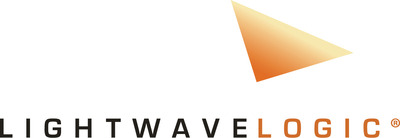Lightwave Logic EO Polymer Achieves World-Class Performance of 400Gbps with Plasmonic Mach Zehnder Modulator
Lightwave Logic's Perkinamine™ Material Achieves World-Class Performance in Collaboration with Swiss University ETH
In this work, intensity modulated, direct detection (IM/DD) techniques were utilized to drive higher performance. The paper, authored by ETH
The data center industry is currently focused on exceeding 200Gbps per lane, primarily driven by generative AI opportunities. 200Gbps per lane with 4 lanes is a current interest for 800Gbps pluggable transceiver manufacturing, which our company's EO polymers have easily achieved. This world-class result, achieving data rates of 400Gbps per lane, demonstrates that our company's EO polymers are capable of exceeding double the current industry expectation. This has the potential to enable 4 channel 1.6Tbps (1600Gbps) pluggable transceiver modules, which is on the roadmap of datacenter operators today.
Dr. Michael Lebby, Chief Executive Officer of Lightwave Logic, commented: "Not only is our EO polymer material ideal for datacenter optical interconnect applications today at 200Gbps – but in my mind, this work proves beyond a doubt that polymers are here to stay, with performance headroom of over 400Gbps using a plasmonic based Mach Zehnder modulator design. I am personally very excited not only for our talented materials team, but for the team at ETH
About Lightwave Logic, Inc.
Lightwave Logic, Inc. (NASDAQ: LWLG) develops a platform leveraging its proprietary engineered electro-optic (EO) polymers to transmit data at higher speeds with less power in a small form factor. The company's high-activity and high-stability organic polymers allow Lightwave Logic to create next-generation photonic EO devices, which convert data from electrical signals into optical signals, for applications in data communications and telecommunications markets. For more information, please visit the company's website at lightwavelogic.com.
Safe Harbor Statement
The information posted in this release may contain forward-looking statements within the meaning of the Private Securities Litigation Reform Act of 1995. You can identify these statements by use of the words "may," "will," "should," "plans," "explores," "expects," "anticipates," "continue," "estimate," "project," "intend," and similar expressions. Forward-looking statements involve risks and uncertainties that could cause actual results to differ materially from those projected or anticipated. These risks and uncertainties include, but are not limited to, lack of available funding; general economic and business conditions; competition from third parties; intellectual property rights of third parties; regulatory constraints; changes in technology and methods of marketing; delays in completing various engineering and manufacturing programs; changes in customer order patterns; changes in product mix; success in technological advances and delivering technological innovations; shortages in components; production delays due to performance quality issues with outsourced components; those events and factors described by us in Item 1.A "Risk Factors" in our most recent Form 10-K; other risks to which our company is subject; other factors beyond the company's control.
Investor Relations Contact:
Lucas A. Zimmerman
Managing Director
MZ Group - MZ North America
949-259-4987
LWLG@mzgroup.us
www.mzgroup.us
![]() View original content to download multimedia:https://www.prnewswire.com/news-releases/lightwave-logic-eo-polymer-achieves-world-class-performance-of-400gbps-with-plasmonic-mach-zehnder-modulator-302099412.html
View original content to download multimedia:https://www.prnewswire.com/news-releases/lightwave-logic-eo-polymer-achieves-world-class-performance-of-400gbps-with-plasmonic-mach-zehnder-modulator-302099412.html
SOURCE Lightwave Logic, Inc.










